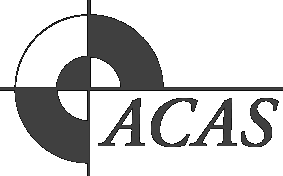
Ver. 6
Every ACAS program needs these documents. The auditor will check them at audit and may collect simples. If possible, it is advisable to email them to the auditor before the audit in order to speed up the auditor.
Links open new windows.
Signed form for the latest version of the agreement |
View latest version of agreement | Form |
Strategy form for each course or qualification |
This form includes many different compliance requirements and must be kept up to date. |
All advertising literature, including micro-ads |
Even small ads are included, because the standards do not set a minumum size ad for compliance. Some other forms of information for prospective students are not ads, such as school handbooks and newsletter articles. Some sites do not issue ads at all, and refer only to the ACAS website information. If they use photos of people anywhere, check they have signed permission statements from the people depicted. |
Course information for students |
Note: This section is only required if you use written or recorded material to advertise your program(s). (Some programs only use word of mouth.) Otherwise, student information is placed on the ACAS website. Course description |
Staff expertise |
Each instructor needs to provide a current Approval to deliver form, and copies of all relevant credentials. |
Delivery materials |
The point is to show that the site has sufficient delivery materials for all units offered. Materials will vary greatly according to how the program is delivered, e.g. online, practicum, classroom, outsourced. Your delivery materials must cover all units (and specific unit requirements) that you teach. You cannot include all training materials in the audit report, but auditors should describe them and go through a sample of at least two units and check that materials cover all requirements. The evidence may vary, for example: |
Equipment list |
The point is to show that the site has all equipment prescribed as necessary for all units offered. |
Assessment materials |
Check assessment materials for all units to be offered.
See the footnote for a working definition of assessment tools. |
RPL assessment tools |
A site must be able to offer RPL for all programs it has in scope for all units listed in the Training and Assessment Strategy form: |
Mapping of assessment tools | The mapping must show that assessments cover all unit requirements, but there is is no prescribed format. • Check that your mapping accurately represents unit requirements. Once correct, these only need to be changed for necessary improvements. • Mapping should also cover RPL assessment tools if they are separate. |
A sample of assessment records | This is not necessary for new programs. It only applies to programs that have been running under ACAS in the year immediately prior to the audit. Auditors want to see how assessments are done and recorded. |
Validations of assessment judgements |
This is not necessary for new programs. It only applies to programs that have been running under ACAS in the year immediately prior to the audit. ACAS internal auditors have been instructed to validate assessments, so there might be nothing that you need to do. |
Program review |
This is not necessary for new programs. A list of glitches, risks, and program weaknesses and a plan to make improvements for each one. (The purpose is to show that the program is continually improving c.f SRTO 2.2 b.) |
Admission checklists | These are the forms filled in showing the items that you have or will cover when admitting students. (e.g. selection procedures, literacy testing, identifying support needs) |
assessment tools
For the purpose of ACAS audits (cf. footnote), assessment tools are defined as follows:
The Standards for Registered Training Organisations 2015 mentions Assessement tools
but does not contain a definition. An official definition of assessment tools is as follows: